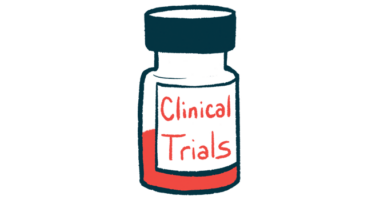Finally, Singaporeans like me can access the SMA treatment Evrysdi
Government assistance has enabled patients to access the costly drug

Note: This column describes the author’s own experiences with Evrysdi (risdiplam). Not everyone will have the same response to treatment. Consult your doctor before starting or stopping a therapy.
I hadn’t meant to fall asleep. “I’m going to close my eyes for just a few seconds,” I told myself. “And then, I’m going to write.”
The next thing I knew, it was two hours later. I awoke in shock. How had two hours in the hospital passed without my knowledge? Visitors for other patients were around. The nurses were taking vitals with beeping machines. My caregiver had placed tissue paper under my mouth to catch my drool. And most surprisingly, my BiPAP mask wasn’t on.
Because my caregiver was still new to me, it hadn’t occurred to her to place the mask on me. She just let me sleep.
She didn’t know that, at age 18, sleeping well without a BiPAP machine had become impossible for me. The first few times I woke up panting and with a headache, I knew it was the end of an era. No longer could I eschew my doctor’s concerns about my shallow breathing when I slept. Owning a BiPAP wouldn’t be a precaution anymore; it’d have to be a necessity. “Oh well,” I thought. I’d managed to sleep without a BiPAP machine years longer than most SMA patients.
I didn’t think I’d ever regain that ability. But in October 2024, two months after I was prescribed Evrysdi (risdiplam) to treat the motor neuron loss caused by SMA, it appeared I had.
And now, a very belated announcement!
I’d meant to write about finally acquiring Evrysdi — an oral disease-modifying therapy (DMT) that targets the cause of SMA — much sooner. Regular readers of my column will be familiar with my fight to lower the high financial barrier to the drug in Singapore, where I live. I’ve written columns about it since 2021. I’ve mentioned it in interviews and guest articles across several local publications.
I even launched a crowdfunding campaign for a year’s supply, in the hopes that I could stem the progress of my disease while Singapore’s Ministry of Health (MOH) deliberated on whether they’d provide SMA patients with funding for Evrysdi.
Alas, I was hospitalized on and off for almost half of 2024; all the scheduling I did for my column, including this announcement, had to be chucked out the window.
But I’m ecstatic to finally, finally say on SMA News Today that in August 2024 — aka SMA Awareness Month — MOH implemented subsidies to help Singaporeans and permanent residents access Evrysdi. Under the Medication Assistance Fund, patients with an SMA diagnosis are eligible to receive up to 75% of the drug’s cost in subsidies. Should they require further assistance, they may apply for Medifund, which will cover the remaining cost.
It doesn’t matter which stage of the disease you’re at or how old you are. If you want to be treated with the drug, you’ll likely be covered after you apply for assistance. In my opinion, this coverage implies that Singapore’s government sees healthcare for SMA patients as a right, which is how things should be.
Still, the fight for healthcare can never relent
I’m not exaggerating when I say I might not be here without Evrysdi. The back half of 2024 wrecked my body with each hospital admission, since I experienced debilitating chronic pain and vomiting as a complication of my fentanyl prescription. I often went days without so much as a drop of milk going down my throat.
But after I started Evrysdi, I wasn’t just able to nap without my BiPAP when I was feeling better — once the nausea faded, I was able to consume food and medication with my BiPAP on. In turn, I could regain strength and bounce back within mere days instead of weeks. I couldn’t do that even as a child, and after that SMA stole things like my ability to lift a cup. Evrysdi can literally be lifesaving. While I’m grateful I have it now, I can’t help but still be a little upset that it took years to receive access to it. SMA is progressive; every second counts.
Hopefully, the journey to creating financial access to Evrysdi will serve as a lesson for what Singaporeans and our government can do about treatments for other rare diseases on the horizon. Some of my best friends have muscular dystrophy, another progressive neuromuscular disease, and it pains me to watch their conditions deteriorate while mine improves. I now know firsthand how much difference a treatment that can directly target your disease makes. Once others have options available, they should be able to experience the differences, too — and ASAP.
In the meantime, I’m grateful to everyone who helped me raise awareness about my case, to every donor to my crowdfunding campaign, and to my neurologists and loved ones for their support. With each dose I take, I’ll think of you.
Note: SMA News Today is strictly a news and information website about the disease. It does not provide medical advice, diagnosis, or treatment. This content is not intended to be a substitute for professional medical advice, diagnosis, or treatment. Always seek the advice of your physician or other qualified health provider with any questions you may have regarding a medical condition. Never disregard professional medical advice or delay in seeking it because of something you have read on this website. The opinions expressed in this column are not those of SMA News Today or its parent company, Bionews, and are intended to spark discussion about issues pertaining to spinal muscular atrophy.









Daisy L.
This is truly groundbreaking news for the SMA community in Singapore! As someone directly impacted by spinal muscular atrophy, I cannot overstate the significance of having Evrysdi (risdiplam) finally accessible here. The approval represents not just a treatment option, but hope for improved quality of life—especially for adults like myself who had limited therapeutic choices previously.
While celebrating this milestone, I’m curious about two aspects:
Affordability & Subsidies: Will there be financial assistance programs to ensure equitable access across socioeconomic groups?
Long-term Care Integration: How will neurologists here coordinate with rehabilitation specialists to optimize outcomes?
Thank you for highlighting this medical advancement—it’s personal for many of us. Here’s hoping this paves the way for faster approvals of other rare disease therapies in our region.
Daisy L.
As someone whose family has been directly impacted by SMA, this news is profoundly emotional. For years, we’ve watched treatments like Evrysdi transform lives abroad—now Singaporean patients finally have that hope within reach.
The article captures a crucial truth: Access isn’t just about approval; it’s about affordability and ongoing care infrastructure. I hope insurers and hospitals move swiftly to make this accessible beyond just private clinics.
To fellow SMA families in SG: Have you navigated the approval process yet? Any insights to share? And to policymakers: How can we ensure next-gen therapies reach all who need them, not just those with means?